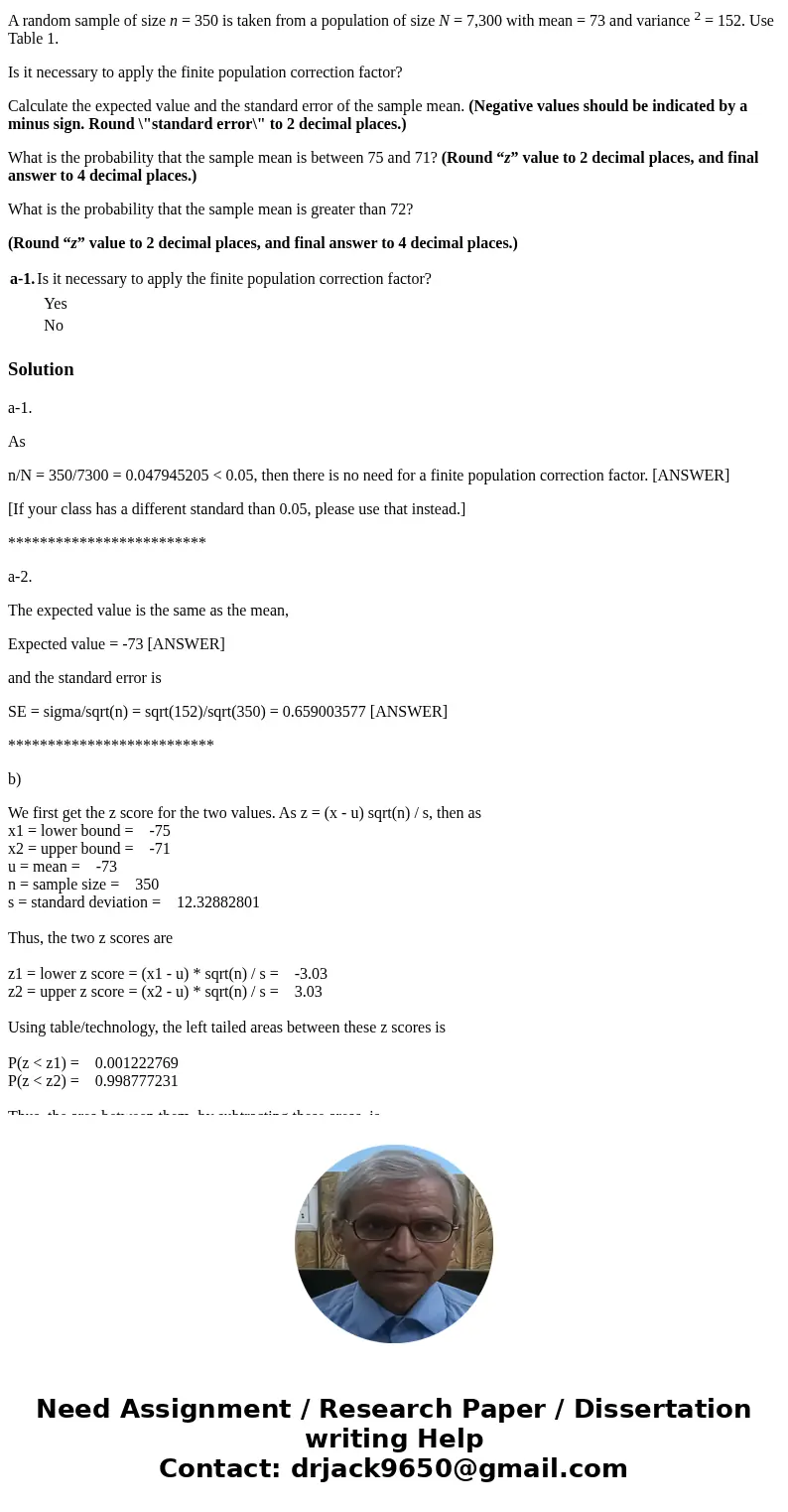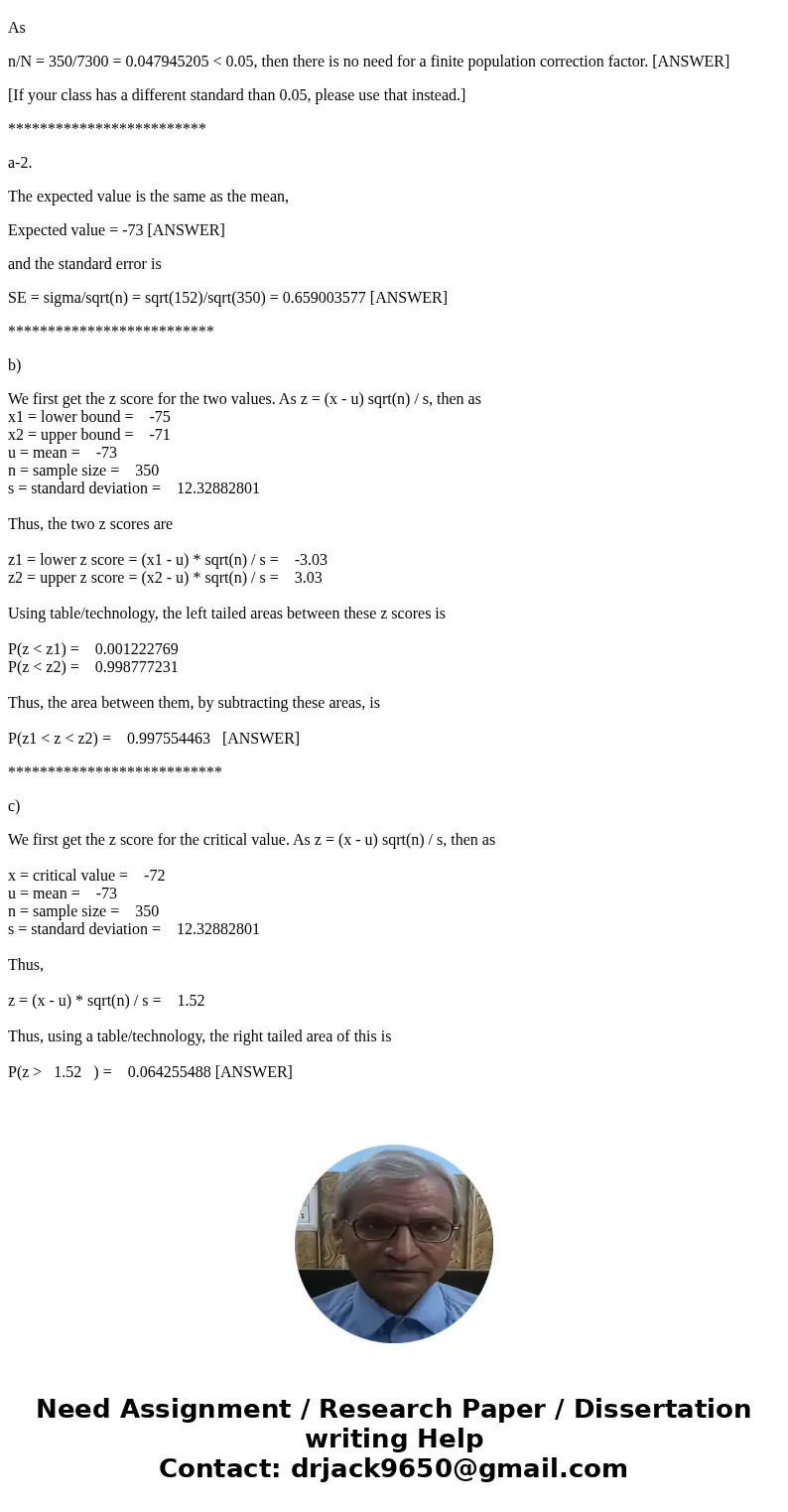A random sample of size n 350 is taken from a population of
A random sample of size n = 350 is taken from a population of size N = 7,300 with mean = 73 and variance 2 = 152. Use Table 1.
Is it necessary to apply the finite population correction factor?
Calculate the expected value and the standard error of the sample mean. (Negative values should be indicated by a minus sign. Round \"standard error\" to 2 decimal places.)
What is the probability that the sample mean is between 75 and 71? (Round “z” value to 2 decimal places, and final answer to 4 decimal places.)
What is the probability that the sample mean is greater than 72?
(Round “z” value to 2 decimal places, and final answer to 4 decimal places.)
| a-1. | Is it necessary to apply the finite population correction factor? | ||||
|
Solution
a-1.
As
n/N = 350/7300 = 0.047945205 < 0.05, then there is no need for a finite population correction factor. [ANSWER]
[If your class has a different standard than 0.05, please use that instead.]
*************************
a-2.
The expected value is the same as the mean,
Expected value = -73 [ANSWER]
and the standard error is
SE = sigma/sqrt(n) = sqrt(152)/sqrt(350) = 0.659003577 [ANSWER]
**************************
b)
We first get the z score for the two values. As z = (x - u) sqrt(n) / s, then as
x1 = lower bound = -75
x2 = upper bound = -71
u = mean = -73
n = sample size = 350
s = standard deviation = 12.32882801
Thus, the two z scores are
z1 = lower z score = (x1 - u) * sqrt(n) / s = -3.03
z2 = upper z score = (x2 - u) * sqrt(n) / s = 3.03
Using table/technology, the left tailed areas between these z scores is
P(z < z1) = 0.001222769
P(z < z2) = 0.998777231
Thus, the area between them, by subtracting these areas, is
P(z1 < z < z2) = 0.997554463 [ANSWER]
***************************
c)
We first get the z score for the critical value. As z = (x - u) sqrt(n) / s, then as
x = critical value = -72
u = mean = -73
n = sample size = 350
s = standard deviation = 12.32882801
Thus,
z = (x - u) * sqrt(n) / s = 1.52
Thus, using a table/technology, the right tailed area of this is
P(z > 1.52 ) = 0.064255488 [ANSWER]


 Homework Sourse
Homework Sourse